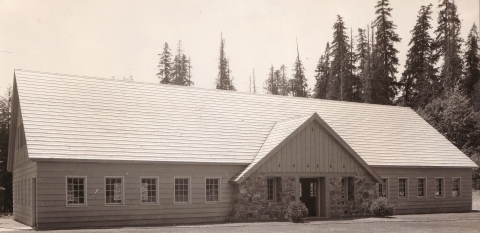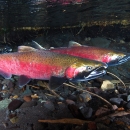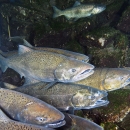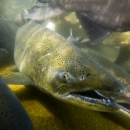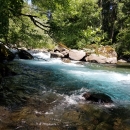About Us
Since 1871 the National Fish Hatchery system has been at work improving recreational fishing and restoring aquatic species that are in decline, at risk, and are important to the health of our aquatic systems. Across the country, the network of National Fish Hatcheries work with states and tribes to conserve, restore, and enhance the fish and aquatic resources of America for future generations.
We currently produce 1.52 million spring Chinook salmon annually for release directly into the Wind River.
The hatchery is located 13 miles northwest of the town of Carson, WA. It lies in a heavily forested valley in the heart of the Gifford Pinchot National Forest at the confluence of Tyee Creek and the Wind River. The hatchery sits on 20 acres of developed river-bottom at river mile 18 on the Wind River which enters the Columbia River 155 miles upstream of the Pacific Ocean.
Our Mission
Since 1871, National Fish Hatcheries have been applying science-based approaches to conservation challenges. We work with our partners and engage the public to conserve, restore, and enhance fish and other aquatic resources for the continuing benefit of the American people. Conservation is at the heart of what we do, and we recognize that we do this work for the American people–both the present generation who benefit today and future generations who will inherit our legacy of conserving America’s aquatic resources.
Carson National Fish Hatchery was established in 1937 to mitigate for the effects of federal water projects, primarily Bonneville Dam. The hatchery was remodeled in 1956 to establish a hatchery spring Chinook run in the Wind River, and is currently used for adult collection, egg incubation, and rearing of spring Chinook salmon.
Our History
Built by the Civilian Conservation Corps and originally referred to as the “Tyee Substation,” the Carson National Fish Hatchery began rearing fall Chinook salmon as well as other salmon and trout in 1937. Soon after, spring Chinook populations in the lower Columbia River plummeted due to spawning habit loss and degradation from dams and other development. The Carson National Fish Hatchery was tapped to preserve this commercially important fish and we began raising spring Chinook in the 1950’s, with the first adults failing to return to the hatchery until 1960. From 1981 to today, we have reared spring Chinook salmon exclusively to promote the species’ recovery.
Other Facilities in this Complex
We're part of the Columbia River Gorge National Fish Hatchery Complex, which includes the Carson, Eagle Creek, Little White Salmon, Spring Creek, Warm Springs, and Willard National Fish Hatcheries. Our complex propagates, releases, and transfers to partners over 25 million salmon to meet the U.S. Fish and Wildlife Service's fisheries mitigation, restoration, and tribal trust responsibilities. Explore what each facility has to offer below.


